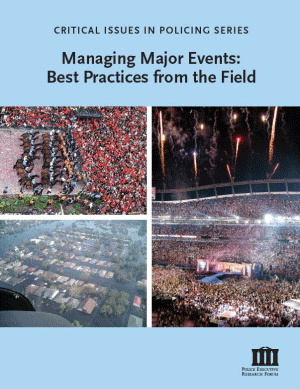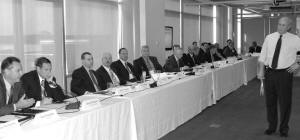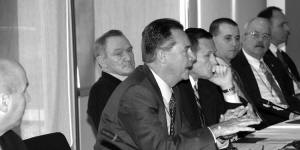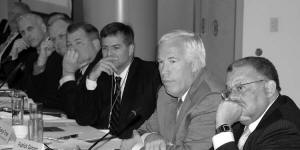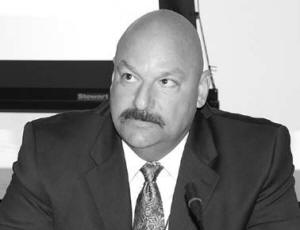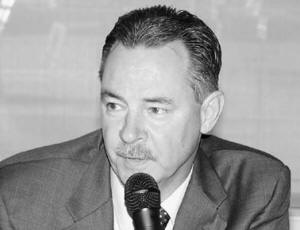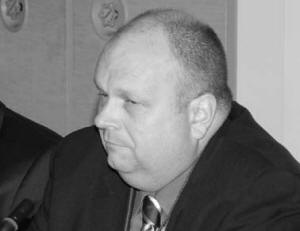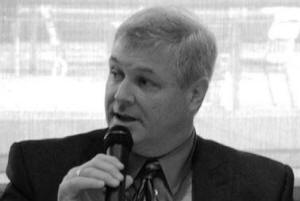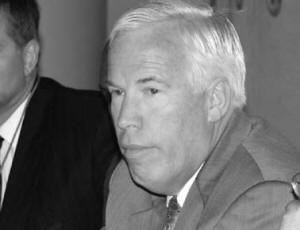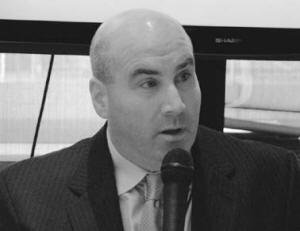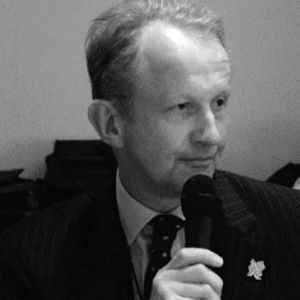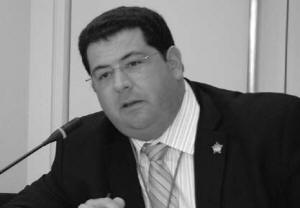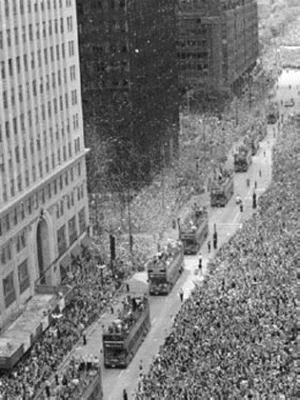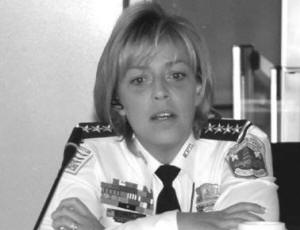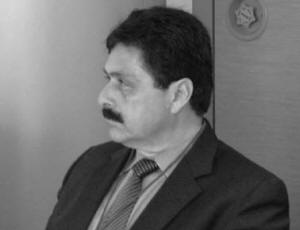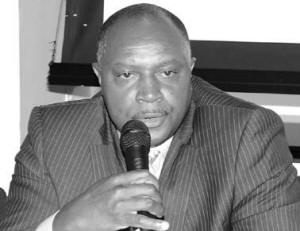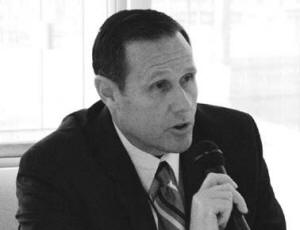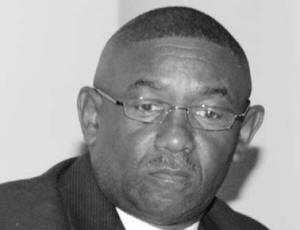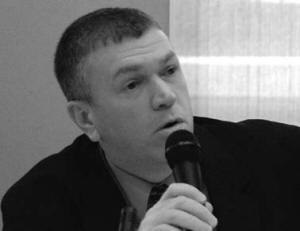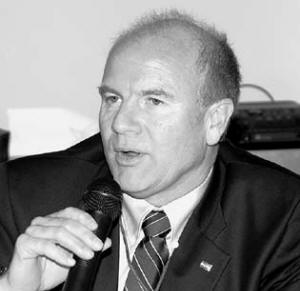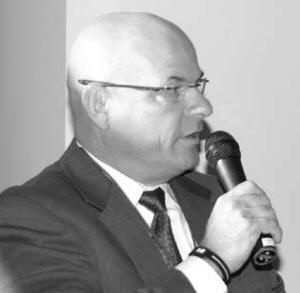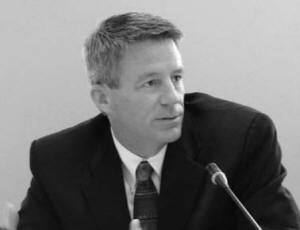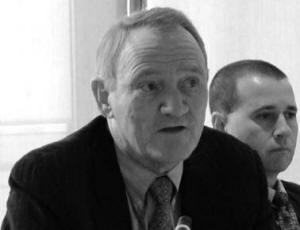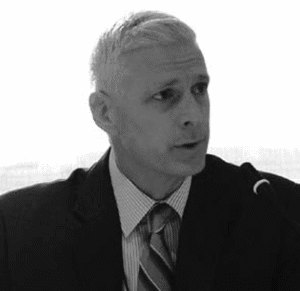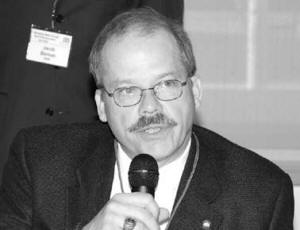CHAPTER 2: A “Softer” Approach to Crowd Management: The Vancouver ModelVancouver Deputy Chief Doug LePard:A Policy of Tolerance and Police Restraint Won Over Crowds At the 2010 Winter Olympics
We really have to thank our friends the Brits for the evolution of our crowd control tactics. They have a lot of experience dealing with hooligans at soccer games, and we were fortunate enough to have hired quite a few British police officers in the last 10 years, some of whom brought high-level crowd control skills, and they also had the contacts with trainers in Britain. We began changing our training, sending our Public Order Commanders to the UK, and also bringing British trainers to Vancouver to assist the Vancouver Police Department in training our members in a new style of crowd management, which was great preparation for the Winter Olympics.
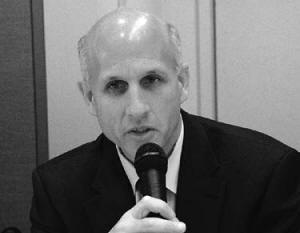 Vancouver, BC Deputy Chief Doug LePard
Vancouver, BC Deputy Chief Doug LePardWith their input, we started developing what we call our “meet and greet” strategy. Instead of using riot officers in Darth Vader outfits, we aim to be totally engaged with the crowd. We were out there high- fiving, shaking hands, asking people how they’re doing, and telling the crowd that “We are here to keep you safe.” We have found that this creates a psychological bonding with the crowd that pays real dividends. It is very difficult to fight the police if you’ve just been friendly with some individual officers.
We police about 300 protests a year; Vancouver is a protest city, so we have extensive experience with crowd management. But the Olympics were something new for us in terms of the size of the event. The scale of the Olympics is hard for people to imagine, because it’s not a one-day event, it’s a 17-day event. It’s like having 17 consecutive Super Bowls.
When you’re planning a big event, especially for a medium-size department like ours of about 1,300 police officers, you need a long planning period because there are so many things that need to be put in place. For example, we decided to double the size of our mounted squad and increase the number of people who could do motorcycle escorts of VIPs. But you can’t just put an officer on a horse or a motorcycle the week before. We had to buy the horses, train the horses, and train the officers to ride the horses or handle the motorcycles at a very high level of proficiency, and teach them crowd control tactics.
At the 2010 Winter Olympics, the activists were out in full force; they came from all over the place. It’s worth remembering that most protesters are peaceful; only a very small number are criminals and agitators who smash windows, vandalize the corporate buildings, and so on. Our goal was to communicate this message to the bulk of the protesters: “We’re your friends. We are here to protect your right to protest. We will stand in harm’s way to protect your right to protest.”
On opening night we did have to draw a line in the sand, because the anarchists wanted to get into the opening ceremony, and we said there’s not a chance of that happening. The situation became fairly violent. Protesters were heaving barricades and rocks and sticks, and some were actually throwing marbles under the horses to try to cause them to lose their footing. They were spitting in the police officers’ faces—and remember, the officers were wearing soft uniforms with no helmets.
In short, the protesters were doing everything they could to provoke a harsh response from the police—but they did not get it.
After that incident on opening night, the media coverage became much more favorable. Reporters were saying, “Look at the abuse the police have put up with and the restraint they’ve shown, and they managed to defuse this.” A couple police officers were injured, but no protesters were injured or arrested.
The next day, the protesters staged a mini-riot and broke some windows, and we did deploy some cops in riot gear. But by then, there were only about 100 “black bloc” protesters [people who wear black clothing, scarves, ski masks, or other face-concealing items] plus about 100 peaceful protesters. The peaceful protesters didn’t want to be a part of what they had seen the night before. The crowds were totally with us. We made seven arrests that day and more later, and when we started making the arrests, the crowds were chanting “Go VPD, go VPD,” because we had built that credibility. After that, the violent groups were spent. A lot of them had booked hotel rooms only for a couple days, so they had to go back where they came from.
Part of our crowd control unit deployment is an evidence-gathering team, so that when we make arrests, we can ensure that we have proper documentation. This team was outfitted with a video camera on a pole, which they used to film as much as they could. We also assigned detectives to our crowd control unit, and they were responsible for coordinating all the reports and ensuring the quality of the investigative reports. They didn’t go home until those reports were done right. So no one could say, “We don’t know why those guys are in jail or who did what,” because the detectives were there to make sure that everything was done right.
Another thing I should mention is that we don’t call it a “riot squad” anymore. Now it’s the “crowd control unit.” The name helps to send a message about how we view the function of this unit.
After those first few days, our main job became managing celebratory crowds. These were outbursts of patriotism among happy people, so in that sense it’s an easier job for us. Still, it’s a big task to manage crowds of hundreds of thousands of people coming into the entertainment zone. The streets were packed so densely that people literally could not move, and the intersections clogged up. Our crowd management units were out in force in soft gear. They are very well trained to maintain a high level of visibility, and they were engaged with the public. We very much won the crowds over. We were part of the celebration. The news media gave us good marks in their editorials, saying things like the Vancouver Police Department deserved a gold medal for policing the Olympics.
We had no lawsuits brought against us after the Games. The British Columbia Civil Liberties Association (BCCLA) had about 300 “legal observers” in bright orange shirts videotaping us, and afterwards, the head of the BCCLA, to his credit, said that the observers didn’t witness a single incident of civil rights abuse. We had one formal complaint, and that was from a woman who was upset that we wouldn’t let her into a popular tourist exhibit after hours. That was the only complaint that we had.
There were some instigators who tried to spread the word that the police were going to sweep the streets of homeless people and restrict protesters to designated “protest pens,” and the news media coverage included these allegations. But we just kept proactively going to the public in a non-offensive way to explain what we were really doing. We kept telling everyone, “We aren’t going to sweep the streets of homeless people or protesters. We will protect your right to protest and you can protest anywhere you like outside the venues. We are here to protect you.” We had our homeless coordinator out there well before the Games started. Very few of the homeless had to move because of the fence lines. We were working with the homeless to get them into housing and to create a relationship with them.
So none of those accusations came to pass. It was really a credit to our crowd control unit members, who put up with an incredible amount of abuse during the first days. Their patience and restraint served as credits in the “credit jar,” and the end result was that the policing of the 2010 Winter Olympics was a big success story.
New Orleans Deputy Police Chief Kirk Bouyelas:Arrests Are a Last Resort When Policing Mardi Gras
We look at Mardi Gras as an annual pre-planned disaster [laughter]. Presently, we are at about 1,500 total sworn officers. We’re down a couple hundred from where we were prior to Hurricane Katrina. And while we do bring in some State Troopers for Mardi Gras, we use every single police officer in the department for some type of Mardi Gras mission.
Mardi Gras has two distinct components: the parades, which are a family event and much easier to police; and the French Quarter, which is seen as an “adult event” and is much harder to police because of the large crowds, drinking and general atmosphere. For managing the French Quarter, one of the things we’ve found is that vehicles and pedestrians don’t mix. You have to take the vehicles out of the equation, so everything becomes a pedestrian walkway. That’s why we block off traffic in the French Quarter every year. We deploy officers on walking beats, and we use bicycles, scooters, horses, and just recently, some Segways.
EMS is another critical component of what we do, because people in the crowds sometimes need medical services. People may fall, get into a scuffle or have some type of medical condition. We have EMS personnel deployed on bicycles and in golf carts. They also work with officers and we find that it’s much easier for them to navigate through the crowds that way.
The aspect of our event management strategy that has made Mardi Gras and other large events a success is our interaction with the crowds. For the most part, people are out there to have a good time, so we don’t use a heavy-handed approach. While we prepare for the worst and do actively stage riot gear, etc., we don’t deploy it unless the need arises. We prefer to use a combination of plainclothes officers and uniformed officers in the crowd.
Engaging the crowd is a huge asset and proven strategy for us. And we also employ a lot of discretion. If someone is not infringing on the good times of another person, then we don’t take the heavy-handed approach and enforce minor infractions. If people get into a scuffle, we try to break it up and separate them. During Mardi Gras, arrests are a last resort for us.
Recommendations/Lessons Learned
• Planning takes time, especially if you need additional personnel and resources. Policies and procedures need to be established in advance, and agencies must account for training time.
• If possible, shut down vehicle access to streets with high pedestrian traffic.
• Have officers on foot or on bicycles, motorcycles, Segways, and/or horseback to meet crowd control needs.
• Avoid using riot gear unless necessary, but keep it available.
• Allow officers to exercise discretion in regard to arrests. Decide ahead of time which behaviors will or will not be tolerated.
• Explain your role to the crowd and outline your expectations for their behavior.
o Most protesters are peaceful; don’t allow a small group of instigators to provoke an aggressive response from officers.
o Be proactive by reaching out to the public or influential community groups beforehand to inform them of your planned activities during an event.
• Use the “meet and greet” strategy.
o Engage the crowd in a friendly, non-confrontational manner.
o Make sure the police are highly visible in “soft” gear and uniforms.
o Befriending the crowd can act as a force multiplier for police.
EMS personnel can partner with officers during an event to provide medical services quickly and efficiently.
